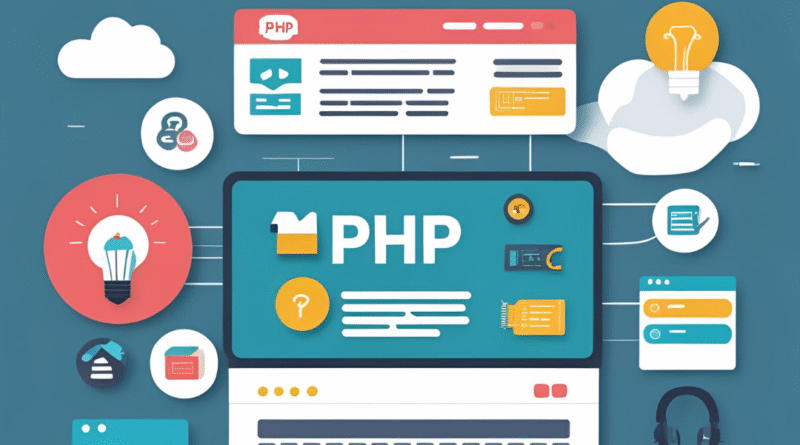PHP Working with APIs:- Building Your First API: PHP & JSON for Beginners
Building Your First API: PHP & JSON for Beginners
In today’s interconnected world, almost every app and website talks to each other. How do they do it? Through APIs! An API (Application Programming Interface) is like a digital waiter, taking your order (request) and bringing back exactly what you asked for (response).
If you’ve ever wondered how to make your own data available to other applications, you’re in the right place. This guide will walk you through creating a super simple API using PHP that delivers data in the popular JSON format. No complex jargon, just straightforward steps!
Why PHP and JSON?
- PHP: It’s a widely used, powerful server-side scripting language perfect for web development and, you guessed it, building APIs. Plus, it’s relatively easy to learn for beginners.
- JSON (JavaScript Object Notation): This is the go-to format for sending and receiving data over the web. It’s lightweight, human-readable, and supported by almost every programming language. Think of it as a universal language for data.
Let’s Get Coding: Your Simple PHP API
We’re going to create an API that returns a list of “products.” Imagine you have a small online store, and you want other parts of your website (or even other apps) to be able to fetch your product information.
What you’ll need:
- A web server with PHP installed (like XAMPP, WAMP, or MAMP for local development).
- A text editor (VS Code, Sublime Text, Notepad++, etc.).
Step 1: Create Your API File (api.php)
In your web server’s document root (e.g., htdocs for XAMPP), create a new file called api.php.
PHP
<?php
// 1. Set the Content-Type header to indicate JSON response
header('Content-Type: application/json');
// 2. Prepare your data (in a real app, this would come from a database)
$products = [
[
'id' => 1,
'name' => 'Smartphone X',
'price' => 799.99,
'category' => 'Electronics',
'in_stock' => true
],
[
'id' => 2,
'name' => 'Wireless Headphones',
'price' => 149.95,
'category' => 'Electronics',
'in_stock' => false
],
[
'id' => 3,
'name' => 'Designer T-Shirt',
'price' => 29.50,
'category' => 'Apparel',
'in_stock' => true
],
[
'id' => 4,
'name' => 'Coffee Mug',
'price' => 12.00,
'category' => 'Home Goods',
'in_stock' => true
]
];
// 3. Convert the PHP array to a JSON string
echo json_encode($products);
?>
Let’s break down the code:
header('Content-Type: application/json');: This crucial line tells the browser (or any application consuming your API) that the data it’s about to receive is in JSON format. Without this, your browser might try to display it as plain text.$products = [...];: Here, we’re creating a simple PHP array of associative arrays. Each inner array represents a “product” withid,name,price, etc. In a real-world scenario, this data would typically be fetched dynamically from a database (like MySQL).echo json_encode($products);: This is the magic function!json_encode()takes a PHP array or object and converts it into a perfectly formatted JSON string. This string is then “echoed” (printed) out to the client.
Testing Your API
- Start your web server.
- Open your web browser and navigate to
http://localhost/api.php(or whatever your local server’s address is).
You should see something like this in your browser:
JSON
[{"id":1,"name":"Smartphone X","price":799.99,"category":"Electronics","in_stock":true},{"id":2,"name":"Wireless Headphones","price":149.95,"category":"Electronics","in_stock":false},{"id":3,"name":"Designer T-Shirt","price":29.50,"category":"Apparel","in_stock":true},{"id":4,"name":"Coffee Mug","price":12,"category":"Home Goods","in_stock":true}]
Congratulations! You’ve just created a functional API that serves JSON data.
What’s Next? (Beyond the Basics)
This is just the tip of the iceberg! To build more robust APIs, you’ll want to explore:
- Database Integration: Connecting your PHP API to a MySQL database or PostgreSQL to fetch and manage dynamic data.
- API Endpoints: Creating different “routes” (e.g.,
/api/products,/api/users/1) to fetch specific types of data or perform different actions. - Request Methods (GET, POST, PUT, DELETE): Understanding how to handle different types of requests for retrieving, creating, updating, and deleting data.
- Error Handling: Providing meaningful error messages when something goes wrong.
- Authentication & Authorization: Securing your API so only authorized users or applications can access it.
- API Documentation: Creating clear instructions for others on how to use your API.
- Frameworks: Using PHP frameworks like Laravel or Symfony can greatly speed up API development.
Start Your API Journey Today!
Creating an API might seem intimidating at first, but with PHP and JSON, it’s a very accessible skill to learn. This simple example is your first step into the exciting world of connected applications. Keep experimenting, keep building, and soon you’ll be creating powerful web services that power amazing digital experiences.



